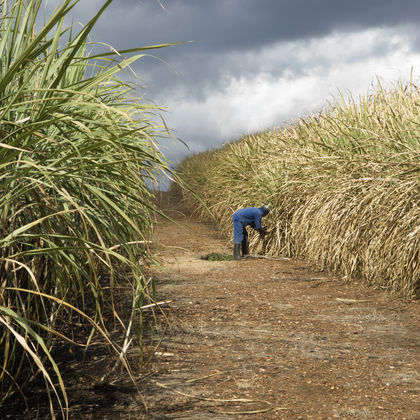Haiti - Agriculture

With 66% of the laboring population deriving its living exclusively from the soil, farming is the mainstay of the Haitian economy. Although only about one-third of the country's land is considered suitable for cultivation because of the rugged terrain, over 33% of the land was actually being used for crop and feed production in 1998; permanent pasture land amounted to 18% of the total land area. Nevertheless, population growth outstripped agricultural growth during the 1970s, and a drought in 1985 affected the production of such important staple crops as rice, maize, and beans. Consequently, foodstuffs have had to be imported in increasing quantity.
Production of coffee in 1999 totaled 28,000 tons, as compared with the record-high of 43,600 tons in 1962. Sugarcane is the second major cash crop, but production has been declining; in 1976, Haiti became a net importer of sugar. Sugarcane production in 1999 was 1,000,000 tons. Other agricultural production figures for the 1999 growing season (in thousands of tons) were bananas, 290; corn, 215; rice, 102; sorghum, 96; dry beans, 36; and cocoa beans, 5. Haitian agriculture is characterized by numerous small plots averaging slightly over one hectare (2.5 acres) per family, on which peasants grow most of their food crops and a few other crops for cash sale; few farms exceed 12 hectares (30 acres). Haiti employs an unusual form of farming called arboriculture. Combinations of fruit trees and various roots, particularly the manioc plant, the traditional Haitian bread staple, replace the grain culture of the usual subsistence-economy farming. Crops are cultivated with simple hand tools; the plow or animal power is only rarely employed, except on sugarcane plantations. Coffee is grown on humid mountain slopes, cotton on the semiarid plateaus and sea-level plains, and bananas as well as sugar on the irrigated plains, which covered about 17,000 hectares (42,000 acres) in 1999. Rice has become a basic staple for Haitians, but local production only meets a little more than 20% of demand.
Also, you may want to add that it is very rare to see a tractor or animal power. Most farming is done by hand and is hard and toilsome. The mountains are the best place for farming because there is still rich soil and they get more rain there.
thanks again and keep up the great work!
Thank you!
to find out how to develop Agriculture in Haiti. It is an international organization working with the United Nations. It is global, you will find agriculture news, farm machinery, etc.